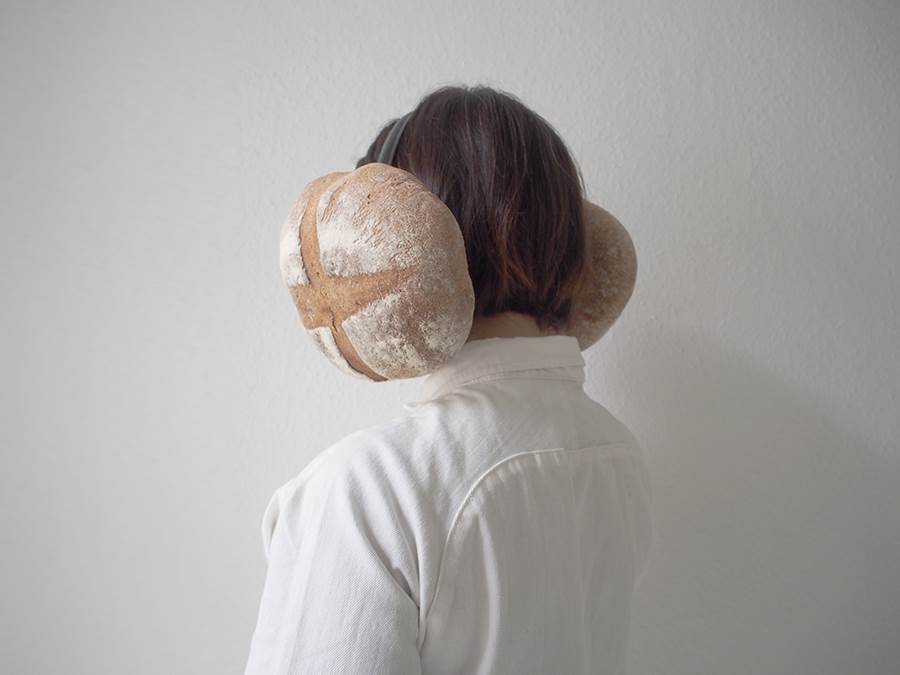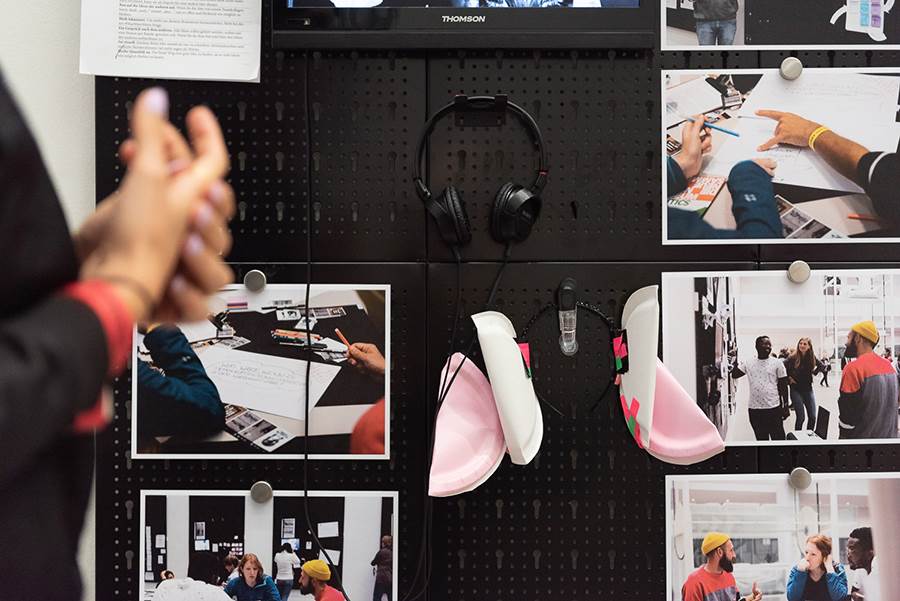Listening to the city with the body: Interview with Banu Çiçek Tülü
03/05/2021
Listening to the city with the body: Interview with Banu Çiçek Tülü
Metehan Özcan

Banu Çiçek Tülü, Sonic Awareness
Banu: The senses guide people in everyday life through the city. The visual approach in architecture and urban design shadows the hearing and listening abilities. Sound is one of the important elements that helps users to understand their environment. Acoustic environment is not only the background sound or a specific soundscape neither a question of noise pollution caused by traffic or daily activities. It is rather about understanding the auditory experiences and discovering the sonic territories in urban space by listening and hearing.
Banu: My name is Banu Çiçek Tülü and I am an artist. I have been developing my ideas and research through extradisciplinary praxis by acting as an initiator of diverse artistic projects that utilize queer, activist, editorial, DJ’ing and academic methodologies.
Mete: Hello Banu, as someone who studied urban planning and working in the field of urban design, how do you relate with sound?
Banu: I describe my artistic activity as a practice based ongoing live performance which modifies itself with everything that I learn, understand, fail, love and share with other human and non-human beings. Urban space is my stage for my performances and they are in the form of soundwalks, workshops and interactive sound art installations. In most cases, I work with perception and sound in urban space.
Mete: It seems that Pauline Oliveros' distinction between hearing and listening may also be related to where and who the person is at the moment. What is the place of sound in your practice? Which groups do you focus on in your practice and why? (Mete: Pauline Oliveros’un duymak ve dinlemek arasında yaptığı ayrım kişinin o anda nerede kim olduğuyla da ilişkili olabilir gibi geliyor. Senin pratiğinde sesin yeri neresi? Pratiğinde odaklandığın gruplar hangileri ve neden?)
Banu: Paulina Oliveros asks the question: “Are you listening?”1 Yes, I listen or I hear. As a person without any disability, I can guide myself in urban space through sound and visuals. With the help of the queer theory, critical theory and intersectionality approaches, I started to use urban space and architecture as representatives of power and oppressed members of the society. Therefore, I choose urban space as my case study in my artistic projects. In order to research in urban space and society, one should not miss the memory and the archives as we are living in a social and spatial context continuously shaping the urban texture in our cities. I am especially interested with the sonic memory and sonic archive of individuals and communities.

Banu Çiçek Tülü, Blocking the Sound*
Mete: Could The xenofeminist manifesto2 be a guide to map these voices that everyone hear and unwittingly accumulate in the public realm? Or how can Feminist and Queer theory be a tool for creating spaces outside heteronormative urban spaces? How do you approach this in your practice?
Banu: I would explain my practice based artistic approach as two-folded: First; I believe in the political possibility of sound. Sound is political and provocative. Producing, creating and designing a sound art piece helps to understand the political context while including the perception and the senses. It fosters the collective imaginary, creates aural maps and memories. My practice is also based on the sociopolitical situations behind their developments. With my artistic work, I initiate conversations with/for women and LGBTQI* as well as minorities in order to understand their issues in urban space. Second; hearing and listening are totally different notions. Working with both these challenges can teach us the “attentive listening” (referring to Pauline Oliveros) which can have a great impact on us in terms of creating awareness, understanding different perspectives and enhancing our political imagination. Thus, soundwalks encourage us to think about the politics of sound. Overall, my recent and future projects are interested in the empowerment of women and LGBTQI* through sound and creating safe spaces in the urban area.
Banu: Queer spaces occur at the margins of society and constitute a safe haven for women and LGBTIQA* oppressed by the heteronormative nature of urban areas. The feminist critique of urban theory and planning that developed in the 1970s demonstrated how urban planners have created gendered environments that are predominantly suited to the needs of men and the heteronormative family. Gender and urban space as a topic of interdisciplinary scholarship emerged during the 1980s. Initiated by feminists, the earliest work deconstructed the ways in which the man-made environment was the material manifestation of a patriarchal society that created gender inequalities. Therefore, it is obvious that there is a huge problem for minorities in urban space which should be addressed clearly.
Banu Çiçek Tülü - Sonic Body Map**, Multi-Channel Sound Installation (4 min. Loop), 2020
Mete: You participate in the various platforms such as universities and urban workshops. What were the results of experiencing the practice of processing sound on maps of certain places in your city with different groups?
Banu: My artistic methodology contrasts itself from the mainstream urban design process and artistic practice while transferring the research and practice based art into the urban space. Nonetheless, my projects involve artistic practice that employs sound (heard, imagined, listened) in urban space. I guess I add one more layer to Kevin Lynch’s work: The image of the city3. As Lynch suggests we all have our visual mental maps and they consist of five qualities: Paths, Edges, Districts, Nodes, and Landmarks. I argue that we also have a sonic map that is created by our aural memory. From the first day of hearing and listening, we create this. Listening happens naturally. We all listen all the time, listening usually becomes a supportive element of the visual world. As we get used to the sounds around us, we do not pay attention to any sound. My artistic work aims to bring back or gain again the idea of attentive listening.
Banu: One can exercise this alone, for example walk slowly and focus on single sonic elements of the surrounding - traffic sounds which can help us to understand in which kind of district we are; if it is a busy area, central, if it is quiet, maybe we are in the periphery. It can also show the working hours of the people who live there, there are peak hours where traffic jams get more visible also sonically.
Banu: The changes in acoustic dimension of urban spaces depend on spatial configurations. One can realize these changes while crossing a bridge, or entering a courtyard. As a bodily impact, while walking, when the pavement changes, we start to feel from our feet and this information merges with listening. Keeping that urban condition in mind, my artistic works deal with the question how can we create non-sexist urban spaces and how sound, radical listening and sonic archives can contribute. It is obvious in cities that LGBTQI* and women are struggling with the top-down and heteronormative decision in urban planning. To make my research questions more visible, I work with one of the most important senses of the human: hearing and gradually listening.
*“Blocking the sound” is a workshop series aims to create awareness on street harassment/verbal harassment (which the artist call them “sonic violence”) through sound. The workshop looks at walking on the sidewalk as a privileged act. For this reason, the workshop kicks off with a sound walk, during which participants can think about the topic. A common means of protection from acoustic violence is the use of headphones. In the context of the workshop, participants are asked to design different headphones using recycled material. Blocking the Sound has been realized in The Design Museum Munich and Sound, Gender, Feminism, Activism by CRISAP London in Tokyo, and it travelled to different location in Berlin, Barcelona and Istanbul.
Picture: Elif Simge Fettahoglu
Illustration by the artist
**The sound installation Sonic Body Map by Banu Çiçek Tülü considers sidewalks and walking as a privileged act. While for many people walking through the city is a normal everyday activity, for women, LGBTIQ*, migrants, People of Color and people with disabilities it can be difficult, challenging, unsafe, threatening and even dangerous, or impossible to move through public space. They are often confronted with acoustic and verbal harassment in the form of unwanted comments, honking, gestures, whistling, catcalling and insults from strangers. Sonic Body Map combines recordings of the artist’s steps, heartbeat and breath as she moves through the streets of Berlin on different days and at difference times, confronted with encounters and harassment. Sonic Body Map builds sonic memories and creates a personal acoustic map of the city.
---------
1 This question belongs to Pauline Oliveros, who is an american composer and female key-figure in the development of experimental electronic music. Oliveros formulated the term “Deep Listening” to describe a practice of radical attentiveness. In her practice, listening is an inherently empathetic bodily act.
2 Laboria Cuboniks. The xenofeminist manifesto : a politics for alienation. Brooklyn: Verso, 2018.
3 Kevin Lynch. The Image of the City. MIT Press. 1960.
